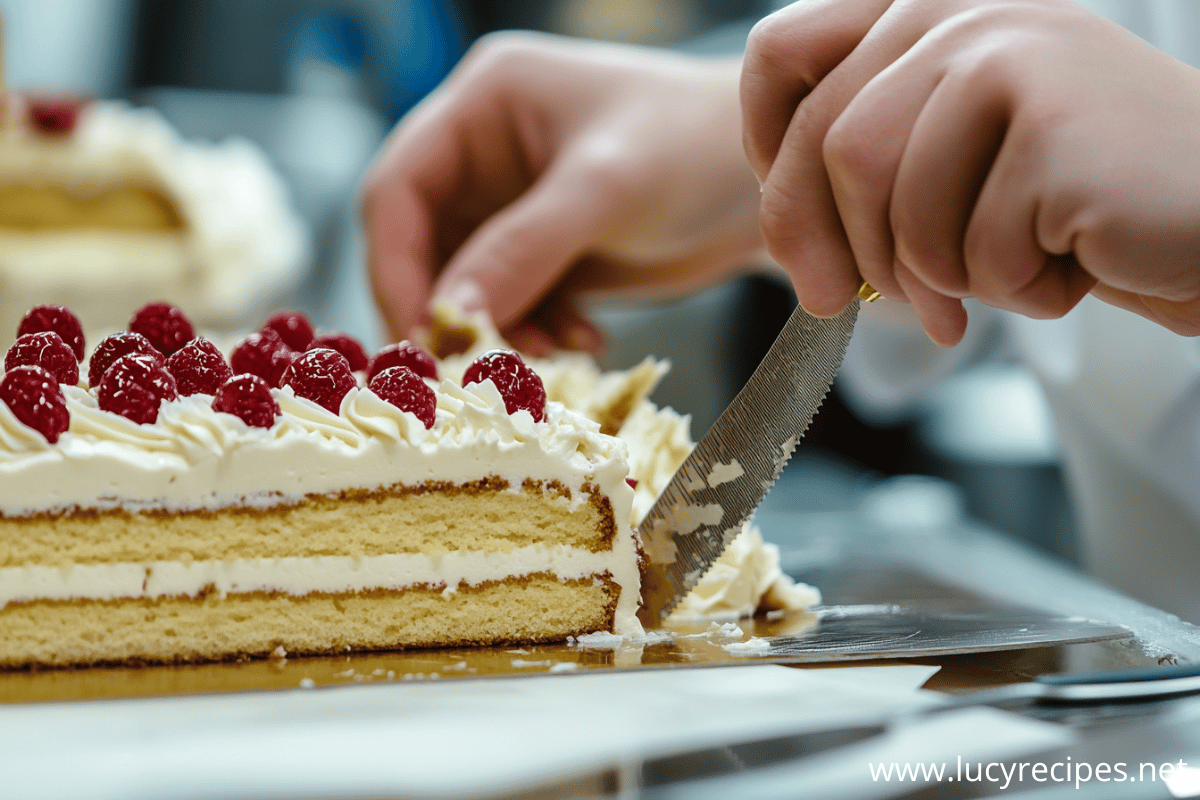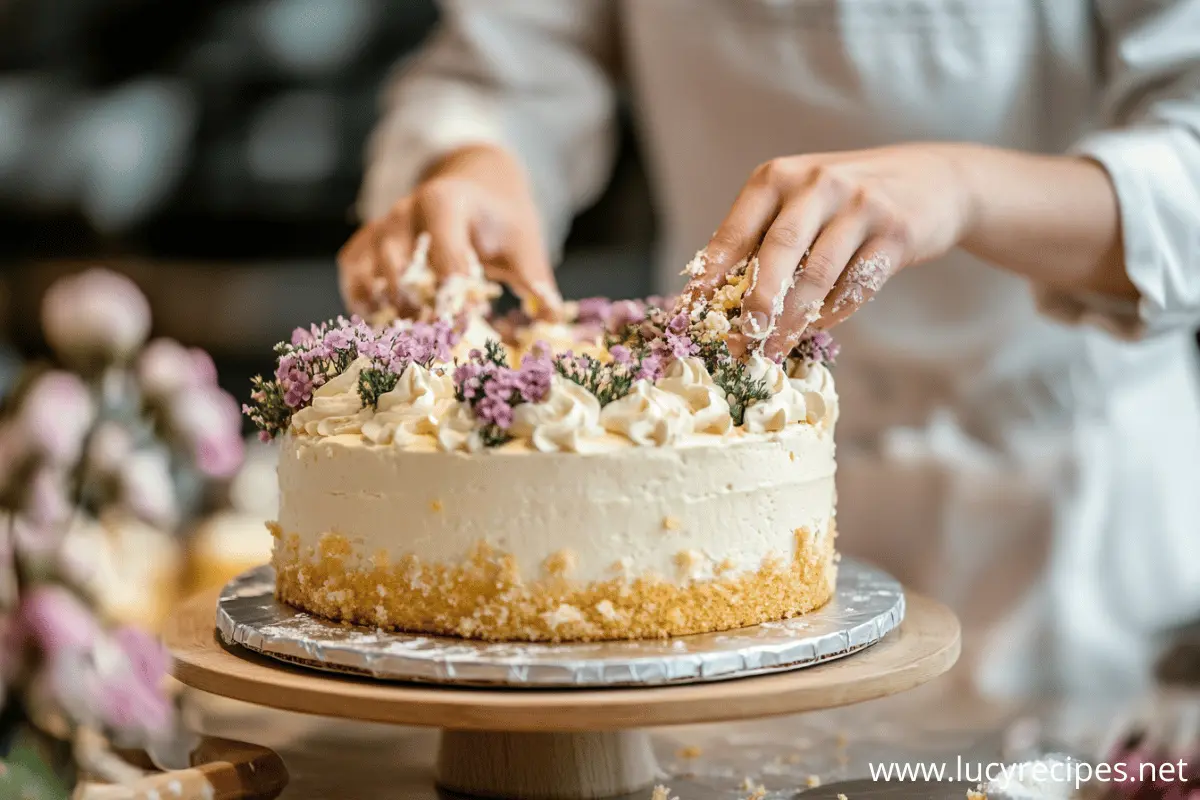Introduction
What Is Cake Scoring has become an integral part of modern baking culture, bridging the gap between culinary art and competitive evaluation. This practice assesses a cake’s aesthetic, taste, and structural elements, ensuring that every detail reflects the baker’s skill and creativity. By understanding its roots, purpose, and techniques, bakers can elevate their craft and succeed in competitive environments.
Table of Contents
Historical Background
Origins of Scoring Techniques in Baking
What Is Cake Scoring has its roots in centuries-old traditions where baked goods were evaluated during community gatherings and celebrations. In earlier times, competitions were informal, often judged by community leaders or elders based on visual appeal and taste. Over time, the concept of scoring became more formalized, with criteria evolving to include texture, creativity, and craftsmanship.
The origins of What Is Cake Scoring can also be traced to festivals celebrating harvests or religious occasions, where baked goods were showcased as a testament to culinary talent. As bakers experimented with designs and flavors, the natural need for structured evaluation emerged, paving the way for scoring practices.
Looking for traditional recipes to inspire your baking? Explore our guide to old-fashioned sweet potato casserole, a classic community favorite.
Evolution in Baking Competitions
The 19th and 20th centuries saw the rise of organized baking contests, such as county fairs and culinary exhibitions, which helped define What Is Cake Scoring. These events introduced structured evaluation frameworks, with judges using standardized scoring sheets to emphasize fairness and consistency.
With international competitions like the World Pastry Cup and the Coupe du Monde de la Pâtisserie, What Is Cake Scoring evolved further, elevating the art form. Bakers began employing advanced techniques and pushing creative boundaries to impress judges and audiences, solidifying cake scoring as an integral part of competitive baking
For bakers seeking an edge in competitions, learning why cakes like poke cakes maintain their moisture can be pivotal to enhancing texture and presentation.
Definition and Purpose
Explanation of Cake Scoring
What is cake scoring? At its core, it is a systematic evaluation process that assesses a cake based on specific criteria, such as visual appeal, flavor, and texture. Judges assign scores for each category, ensuring a comprehensive review of the baker’s skills.
Cake scoring also serves as a benchmark for excellence. It offers bakers a structured way to measure their abilities and identify areas for improvement. Whether in competitions or culinary education, this practice has become a cornerstone of the baking industry.
For those new to baking competitions, start simple with boxed cake mix tips, perfect for practice.
Why Cake Scoring Matters
What Is Cake Scoring is essential in fostering a culture of excellence in baking. By highlighting strengths and weaknesses, it helps bakers refine their techniques and achieve higher standards. Additionally, cake scoring ensures transparency in competitions, promoting fairness and consistency in judging outcomes.
For amateurs, understanding What Is Cake Scoring offers valuable insights into professional-level expectations, helping them grow their skills. Beyond competitions, cake scoring inspires innovation, encouraging bakers to experiment with new designs, flavors, and techniques. This creativity ultimately enriches the culinary world and keeps the art of baking dynamic and evolving.
Key Components
Understanding What Is Cake Scoring involves evaluating several key components that define the quality of a cake:
Visual Presentation
The first impression of a cake is its visual appeal, a vital aspect of What Is Cake Scoring. Judges assess:
- Symmetry and proportionality.
- Color harmony and decorations.
- Precision in details, such as piping and sculpting.
A well-presented cake not only showcases technical skills but also evokes an emotional response, making it a critical factor in scoring. The design should reflect the baker’s creativity while maintaining cleanliness and professionalism.
Want to enhance your design game? Consider tools like gingerbread men cookie cutters to practice precision.
Taste Evaluation
Taste is a cornerstone of What Is Cake Scoring. Judges evaluate:
- Balance of flavors.
- Use of fresh, high-quality ingredients.
- Compatibility of fillings and frostings.
A cake must deliver an exceptional sensory experience, harmonizing sweetness, richness, and subtle flavor nuances. Judges often consider aftertastes and the overall satisfaction a cake provides. An imbalance, such as overly sweet frosting overpowering the cake, can lower scores.
Texture and Structural Integrity
Texture and structure significantly influence scores in What Is Cake Scoring. Judges consider:
- Moistness and crumb consistency.
- Stability and layering precision.
- How well the cake holds up under slicing.
Structural flaws, such as uneven layers or collapsing tiers, can detract from an otherwise excellent creation. A well-structured cake ensures that each bite offers consistent flavor and texture, reflecting the baker’s expertise.
Tools Used in the Scoring Technique
Understanding What Is Cake Scoring includes knowing the tools professionals use to evaluate cakes effectively.

Essential Scoring Tools for Professionals
Professional judges rely on various tools to ensure precise assessments in What Is Cake Scoring:
- Precision knives for clean slices.
- Palate cleansers (e.g., water or crackers) for accurate taste evaluation.
- Scoring sheets with detailed criteria.
Other essential tools include rulers for measuring proportions and templates to verify symmetry. Judges may also use digital timers to assess freshness and stability over time.
Advancements in Scoring Equipment
Recent innovations have enhanced accuracy in cake scoring. Digital tools, such as texture analyzers, measure crumb density and moisture content. High-definition cameras capture intricate details, allowing remote evaluations for virtual competitions.
Innovative scoring apps now enable judges to record scores digitally, streamlining the process. These advancements ensure consistency and provide detailed feedback for participants.
Criteria for Scoring Cakes
Aesthetic Appeal
Judges assess how well the cake aligns with its intended theme or design. Key considerations include:
- Originality and creativity.
- Cleanliness of execution.
- Effective use of colors and patterns.
The cake’s appearance should captivate and engage the audience, reflecting the baker’s artistic vision. Even small details, like the placement of decorations, can influence scores.
Flavor Profile
Taste evaluations focus on the cake’s ability to surprise and delight. This includes:
- Complexity and layering of flavors.
- Proper seasoning and sweetness levels.
- Avoidance of overpowering or bland elements.
Judges often seek balance—a cake that neither overwhelms nor underwhelms. Exceptional cakes may feature unique flavor combinations, such as pairing tart fruits with rich chocolate.
Creativity and Innovation
In competitive settings, innovation often separates good cakes from great ones. Judges reward:
- Unique flavor combinations.
- Novel decorating techniques.
- Ingenious use of ingredients.
Bakers who push boundaries with unexpected designs or unconventional ingredients often leave lasting impressions, earning higher scores.
Cake Scoring in Competitions
Overview of Popular Events
Some renowned competitions include:
- The Great British Bake Off.
- World Pastry Cup.
- Local and regional baking fairs.
These events showcase talent from diverse backgrounds, highlighting the art of cake scoring on global platforms. They also foster community spirit and inspire aspiring bakers.
Dive deeper into baking artistry with recipes like pumpkin banana loaf, blending creativity and flavor innovation.
Judging Panels and Their Roles
Judging panels typically consist of culinary experts, pastry chefs, and industry professionals. Their roles include:
- Providing impartial evaluations.
- Offering constructive feedback.
- Ensuring adherence to competition rules.
Experienced judges bring credibility and rigor to the scoring process. Their feedback helps participants understand areas for improvement and celebrate their successes.
Professional vs. Amateur Cake Scoring
Differences in Criteria
While professional competitions demand technical perfection, amateur contests emphasize creativity and effort. Key differences include:
- Complexity of scoring rubrics.
- Expectations for precision and refinement.
- Weightage given to originality.
Professional events often have stringent guidelines, whereas amateur competitions are more flexible, encouraging participation and learning.
Examples of Notable Amateur Competitions
Amateur events like the “National Home Baking Challenge” encourage hobbyists to explore cake scoring while fostering community spirit. These contests often serve as stepping stones for aspiring bakers.
The Role of Cake Scoring in Baking Education
Incorporating Scoring in Culinary Schools
Culinary schools integrate cake scoring into their curriculum to:
- Teach students industry standards.
- Develop critical analysis and self-assessment skills.
- Encourage innovation in cake design and execution.
Through practical assignments and mock competitions, students gain hands-on experience, preparing them for real-world challenges.
Its Impact on Baking Standards
By emphasizing scoring, educational institutions raise the bar for quality and consistency. This ensures graduates are well-equipped for professional challenges.
Challenges in Cake Scoring

Subjectivity in Scoring
Despite standardized criteria, subjectivity remains a challenge. Personal preferences and biases can influence judgments, affecting outcomes. Addressing this requires transparency and consistency in scoring methods.
Handling Disputes in Competition
Disputes often arise over unclear guidelines or scoring discrepancies. Organizers mitigate these by:
- Providing detailed scoring rubrics.
- Offering avenues for appeals.
- Ensuring judges undergo rigorous training.
Clear communication and well-defined rules help minimize conflicts and ensure fairness.
Tips for Aspiring Bakers
Mastering Cake Scoring
To excel in cake scoring, aspiring bakers should:
- Practice creating visually stunning cakes.
- Experiment with diverse flavor profiles.
- Seek feedback from professionals.
Looking for unique flavor pairings? Try experimenting with recipes like Earl Grey cookies for a sophisticated twist.
Common Mistakes to Avoid
Avoid these pitfalls:
- Overdecorating or cluttering designs.
- Using low-quality ingredients.
- Neglecting structural stability.
Popular Shows and Movies Highlighting the Practice
Shows like “Nailed It!” and “Cake Wars” provide insights into cake scoring, inspiring bakers to refine their skills.
Cultural Significance of Cake Scoring
Regional Differences in Scoring Criteria
Cultural traditions influence how cakes are scored. For instance:
- European competitions emphasize classic techniques.
- Asian events focus on intricate artistry.
- American contests celebrate bold, innovative designs.
Celebrations Featuring Cake Scoring
Festivals like “Cake Fest” showcase cake scoring as a central activity, fostering cultural exchange and community bonding.
Cake Scoring in Media and Pop Culture
Popular Shows and Movies Highlighting the Practice
Series like “The Great British Bake Off” and “Sugar Rush” bring cake scoring into mainstream entertainment, inspiring viewers worldwide.
Social Media Trends Involving Cake Scoring
Platforms like Instagram and TikTok feature viral cake designs, with hashtags like #CakeScoringChallenge promoting creativity and engagement among bakers.
FAQs
What is the primary purpose of cake scoring?
To evaluate and celebrate the artistry and craftsmanship in cake baking.
Who typically scores cakes in competitions?
Professional judges, including pastry chefs and culinary experts.
Are there universal standards for cake scoring?
While broad criteria exist, standards vary by competition and region.
Can amateurs participate in cake scoring competitions?
Yes, many events welcome amateurs to showcase their talent.
What tools do judges use during cake scoring?
Knives, palate cleansers, scoring sheets, and digital analyzers.
How can I improve my cake scoring skills?
Practice, seek constructive feedback, and stay updated on industry trends.
Conclusion
Understanding what is cake scoring and its intricacies empowers bakers to refine their craft and thrive in competitive environments. By mastering scoring criteria and embracing innovation, bakers can transform their creations into works of art that captivate judges and audiences alike.
Through consistent practice, attention to detail, and a passion for baking, aspiring bakers can achieve excellence in cake scoring, leaving a lasting impact on the culinary world.

